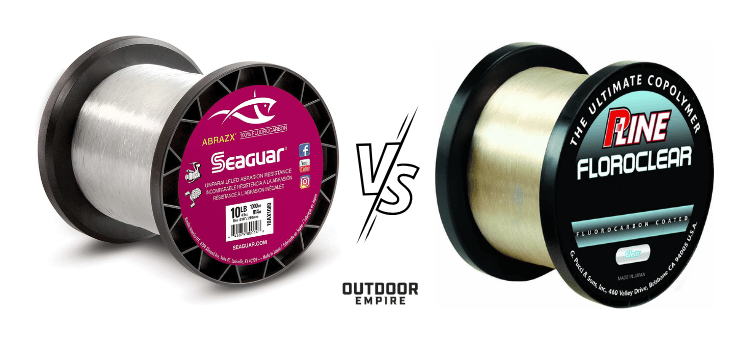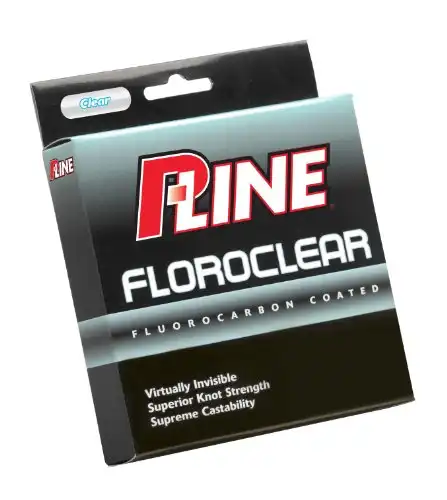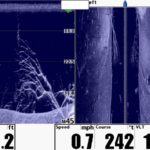You want to purchase the best fishing line available when you go fishing. Two popular choices are Floroclear and fluorocarbon. But what are the differences between the two?
Fluorocarbon is a type of fishing line that is UV resistant and reflects light, so it looks clear in the water. Floroclear is a proprietary fishing line coated in fluorocarbon, so it looks clear while in water. However, it is not entirely made of fluorocarbon.
While fluorocarbon is a type of fishing line made by many different manufacturers, Floroclear is a unique product made by a company called P-Line. Floroclear is essentially a lower-cost alternative to fluorocarbon.
More information about the differences between Floroclear and fluorocarbon is included below. We’ll also discuss the disadvantages of a fluorocarbon fishing line.
What are the Differences Between Floroclear and Fluorocarbon
The main difference between Floroclear and fluorocarbon is what these fishing lines are made out of. Floroclear is a fishing line that is coated in fluorocarbon. Fluorocarbon fishing lines are made out of fluoropolymer PVDF.
Both fishing lines are highly reflective and seem to disappear when they are in the water. This makes both of them effective lines in most scenarios.
There are, however, some important distinctions between the two.
Weight
Fluorocarbon is slightly heavier than Floroclear, so it sinks into the water slightly. This is helpful when you are trying to catch fish that typically swim deep in the water rather than stay near the surface.
Price
Floroclear is typically cheaper than fluorocarbon, as it typically costs between $9 and $55 depending on the retailer and the length of the spool. Fluorocarbon typically costs between $11 and $139.
Durability
Floroclear is considered stronger than fluorocarbon because fluorocarbon often becomes brittle as you use it. This is irritating when you have done the hard work to catch a fish and then the line breaks while you’re reeling it in. Now you’ve lost your line, hook, and your prize-winning and record-breaking catch.
Floroclear is slightly more durable than fluorocarbon. This is partially because the P-Line co-polymer in the interior of the line is stronger than fluorocarbon. And because Floroclear is coated in fluorocarbon, there is an extra layer of material to prevent Floroclear fishing line from breaking.
What are the Disadvantages of Fluorocarbon Line?
There are several disadvantages to using fluorocarbon fishing line. Fluorocarbon is not always ideal because it can be:
- stiff and brittle
- more prone to slipping when tying knots
- more expensive than Floroclear
- difficult to cast long distances
- too stiff for spinning rods
In many cases, anglers opt to use fluorocarbon only as a leader. This can help conceal the end of the line that the bait is attached to from suspicious fish. Given the added cost of fluorocarbon compared to monofilament fishing line, this also helps keep the cost down.
Despite the disadvantages, there are ways to optimize your rigging with flurocarbon.
Is P-Line Floroclear Good Fishing Line?

P-line Floroclear is an excellent fishing line and is preferred by many because of its durability. It has the lightweight and reflective benefits of a fluorocarbon fishing line but is more durable and slightly cheaper than pure fluorocarbon.
Floroclear is also preferred for its reduced memory and increased castability.
What Is the Best Knot for P-Line Floroclear?
There are four different knots that work well when using a P-line Floroclear fishing line:
- Palomar Knot
- Snell Knot
- San Diego Jam Knot
- Clinch Knot
The best knot varies depending on your knotting skills, what type of fish you want to catch, and what type of lure you are currently using.
The Palomar knot is an extremely easy knot to tie. It is often used because of its strength, but you need 8-12 inches of fishing line to tie it properly.
The Snell knot is slightly more difficult and time-consuming than the Palomar knot, but it takes less fishing line to tie properly.
The San Diego Jam knot is solid, even stronger than the Palomar knot, but it is extremely time-consuming to tie. If you are confident that you can tie the San Diego Jam knot, we recommend tying this one with your P-line Floroclear fishing line.
The Clinch knot is one of the best-known knots for attaching your line to a hook, lure, or swivel. It is relatively easy to tie, but some beginner fishermen may find it difficult.
Conclusion
Fluorocarbon and Floroclear fishing lines look extremely similar because of their reflective properties, but they are different.
Before deciding which one to use on any given fishing trip, you’ll want to consider your target fish, where they live, and how big they are.
If going deep in the water with your line is most important, the weight of fluorocarbon could be the most helpful.
On the other hand, if you’re using a spinning rod, then P-Line Floroclear could be your go-to.
Both will virtually disappear in the water. This should help you catch the fish of your dreams.







